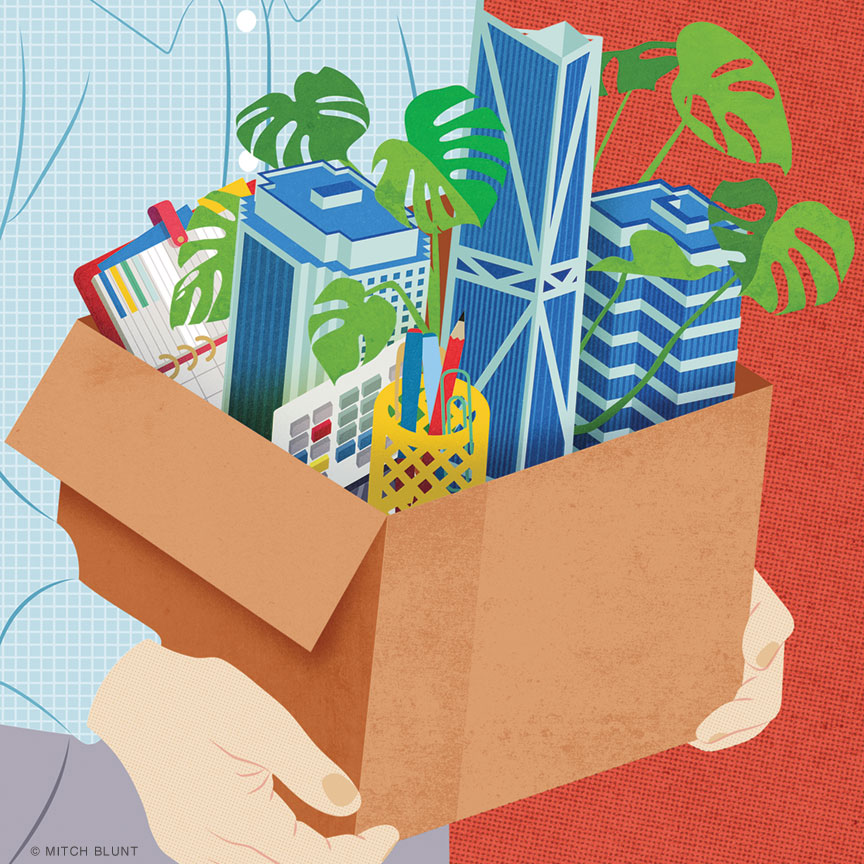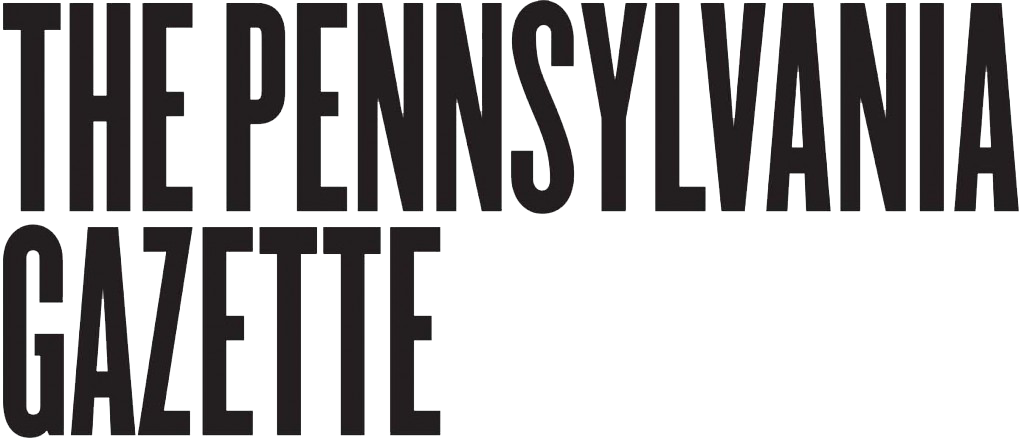
A Penn Institute for Urban Research panel probes the work-from-home effects on American cities.
Working from home, especially on a hybrid schedule, used to be the stuff of dreams and envy. Now we all know at least a few people doing it—and maybe you’re one of them.
“What we’ve seen over the past four years is about a fourfold increase in the share of full, paid days working from home,” said Jose Maria Barrero, an assistant professor of finance at Instituto Tecnológico Autónomo de México who has been studying this trend. “We’re definitely in a new normal.”
But how is this shift impacting cities, where shops and restaurants rely on lunch-break and after-work spenders, public transit is fueled by commuters, and large office buildings need workers to fill them? As work-from-home habits hit all these sectors, are cities destined to fall into “doom loops”?
Those questions were at the heart of a recent panel discussion led by Penn’s Institute for Urban Research (IUR) and the Volcker Alliance, a New York-based nonprofit that aims to empower the public sector workforce. Barrero was joined by other economists in laying out the unnerving urban impacts of remote work.
David Stanek, who coauthored the new paper “Doom Loop or Boom Loop: Work from Home and the Challenges Facing America’s Big Cities” with Wharton professor and IUR codirector Susan Wachter and several others, called San Francisco “the poster child for a difficult post-pandemic recovery.”
The city’s office vacancy rate recently reached an all-time high of nearly 37 percent. Public transit use is less than half of what it was pre-pandemic. Property values are declining faster than the national average. San Francisco also had more people working from home than the other four major cities that the paper examined.
“So what should cities be doing?” Stanek asked. He suggested an economic restructuring in cities, focusing on industries that require in-person work. Improved public transit systems, better office spaces, cheaper housing, and a high quality of life are also essential for cities to put themselves into a “boom loop” rather than a self-reinforcing downward spiral.“I can’t say these are novel recommendations,” he added, “but these are very much needed.”
Stijn Van Nieuwerburgh, a real estate and finance professor at Columbia University’s Graduate School of Business, underscored one specific solution: converting “brown” offices into “green” apartments. He said that would address the excess of office space and lack of affordable housing in many cities—as well as the ongoing climate crisis. Despite financial, physical, and regulatory obstacles, he still sees possibility. “I’m a conversion optimist,” Nieuwerburgh said. “I’m of the belief that we could deliver 10 percent of new houses in our urban environment from office conversions.”
“It’s not a panacea, it’s not a silver bullet,” he added, “but 10 percent is not nothing.”
Yet even as an optimist who hopes cities will innovate their way to “a business-friendly environment and a safe environment,” Nieuwerburgh admitted the possibility of a doom loop. He said that New York is currently facing its worst office-building crisis in decades, with some buildings selling for less than half of what they were considered to be worth before the pandemic. “There’s no doubt in my mind that the bottom 20, 30 percent of the office market in New York City is completely doomed,” he said. “Over time, that will have implications for the tax base.”
He noted that the office-building problems in San Francisco are even worse. And “it has infected the apartment market as well,” he said, “which hasn’t happened in New York City.”
So what, Wachter wondered, is necessary to create a boom loop in cities?
Stanek again pointed to improved housing supply and public transit. Kathryn Wylde, the president and CEO of the nonprofit Partnership for New York City, added public safety to the list—“that’s an area where we have work to do,” she said—along with affordability. She said it’s crucial to examine the specific factors making New York City unaffordable, including high construction costs, high taxes, and high insurance costs.
Barrero said boom loops will also depend on giving workers a reason to come back to the office and the city. “Some firms [have done] as many as five pushes to return to the office, which gives you a sense of how difficult it is for certain organizations to bring their people back.”
Recently he has been including qualitative questions in his work-from-home surveys to see what might lure workers back to the office. He’s been finding that in-person collaboration, the opportunity to socialize, the quality of an office space, and an easy commute all help.
It’s a familiar challenge in New York. In a recent survey, Wylde’s nonprofit found that slightly more than half of workers are in the office on an average workday—below where things stood pre-pandemic. “In terms of what’s been found by employers to get people back to the office, they all say free food,” Wylde said. Workspace quality matters, too. “There’s been a flight from old, dingy office buildings to brand-new buildings, and employers have shown they’re willing to pay the price,” she added.
When asked how companies have been faring in their attempts to simply force people back to the office full time, Wylde was blunt. “Monumentally unsuccessful,” she said. “Incentives are helpful, but flexibility is the key to a happy workforce.”
—Molly Petrilla C’06




